I first met Richard Staub through mutual friends who described his work as alternately beautiful and unsettling. Some time later, I was fortunate enough to visit him in his studio in Brooklyn. What follows is a written interview where he discusses the scope of his work and ideas regarding his choice of materials, the latter of which I find provocative, brave, and a little disturbing. I am led down some dark paths when I contemplate the various fruits of his expression. He and I differ our interpretations his work, his own attitude being quite matter of fact, even blasé. He has a point – much of his work concerns the very stuff that glues our lives together. Literally.
Art Blah Blog: You do many kinds of work – paintings, sewing, collage, sculpture. When you go to the studio, do you have an idea as to what you’ll be working on that day? Do you ever feel conflicted about what you “should” be working on?
Richard Staub: Since I make work both at home and at the studio, what I work on and when is determined by where I am and the kind of work I do there. Whichever space I’m in, I rely on intuition regarding what to work on. And I often leave the studio in the evening with an understanding of what next step to take on one of the pieces when I return. At the studio, I’m working on a series of paintings that I’ve started over the last several years and are waiting for completion. (There are also some taped plastic pieces underway.) I only paint at the studio and since I get there just two times a week, I have a warm-up procedure which includes working in my notebook, straightening up anything that feels out of place, and just looking at work or reading the newspaper. Then I see where I can make the next move.
My biggest “should” is to do more painting, but I’ve come to realize that making the other work that has a stronger physical presence is part of the process of internally digesting what a painting may need. And some of the taping and sewing work involves repetitive, calming steps that are helpful in focusing.
ABB: It’s my understanding that you started to make art primarily as a painter. When did you start making the other kinds of work? Did you feel that they scratched an itch that painting did not? If so, how?
RS: I did start as a painter when I was a student at SVA in the early 70’s and my main conscious drive was to understand color and paint following the example of the AbEx painters. Along with that was an emphasis on process but I had very little awareness of its implications. For example, I eventually started to use more chance procedures to open up a piece.
Fairly early on I started to make more three dimensional work (I was looking at how to make drawing occupy an open space) and sculpture. I felt very uncomfortable making large, solid pieces so my sculpture for the most part consisted of pieces with a wire armature and form covered by plaster cloth and then painted. Today most of my pieces, while some may occupy a large space, are in fact very light and collapsible.
In the early 80’s I started thinking about an SVA studio class that I’d been too apprehensive to take when I was a student. The exercise I heard about, transform a piece of clothing to reveal something about yourself that no one knows, was an eye opener for me because I was both attracted to the idea and afraid. I knew what I would have done, and that it would be an important step to take. A piece by Louise Bourgeoise in her mid-career show at MoMA was very helpful in that regard.
So I decided to work with the materials I would have used for that piece and make something that felt true to the current moment. And all of the non-painting work came out of exploring the desire to explore spaces that I’d kept hidden.
ABB: Some of your work has an unsettling vibe. Within that category I would place the wig pieces, the plastic bag sculpture pieces, and the collages – all of which seem to encompass (among other themes) ideas of humans as a kind of waste product. Admittedly, some of these have a “warmer” feel than others, but they seem to exist within a continuum that I’ll call “the horror of human existence”. On the other hand, your paintings are quite romantic in their use of color and gesture, at times having an elegiac feel. Formally, they’re certainly very different. How do you deal with that in the studio? Are there different intentions behind your different kinds of work?
RS: The perceptions and “ideas” behind the work you’ve articulated aren’t shared by me. At different times I felt I had to move towards materials that were considered in poor taste to go against my upbringing in a very restrained emotional and physical environment. I’ve been interested in found materials, “waste” materials, bodily fluids, etc. for quite a while. I like how I find them in the world, their everydayness. In all cases, I want the work to have a visceral quality. All of the pieces reflect shared interests in revealing and concealing, veiling, rising and falling, containment, compression and expansion, and the formed and unformed. The materials may be unsettling to some, but the there is a continuum of expressive impulses.
ABB: Related to the last question, do you worry that the scope of your expression makes it difficult for curators to get a bead on your work? Or do you find that curators see more possibilities for your work because you’re not locked into one medium?
RS: It is sometimes is a concern. But every time I show the work I see that while different kinds of work speak to different people, they pick up on the continuity of interests among the different groups. I’m not sure if curators see more possibilities for my work. It was true of the last show I was in, which was a group show on contemporary drawing. There were several groups of pieces the curators were interested in, but in the end they could only show one piece. It was a very large sewn net that I feel held its own.
ABB: Were there any shows that you were especially impressed with lately?
RS: I was very impressed by the “Come Together, Surviving Sandy” show at Industry City in Brooklyn where I have my studio. The level of work was very high and provocative throughout. It was tremendously encouraging to see the quality of thinking and exploration that’s happening in the city. I should add that with a close to full-time day job, I don’t get to see much work – it’s either going to galleries or being in the studio – so this show felt like a very satisfying meal for a hungry man.
ABB: Are you showing anywhere soon?
RS: I will be participating in an open studio day on April 26 at Industry City and showing a representative group of pieces.
All images Copyright © Richard Staub
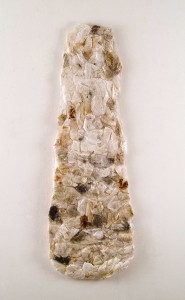
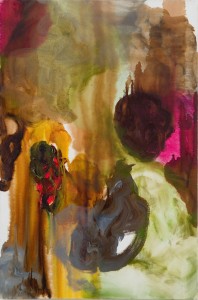
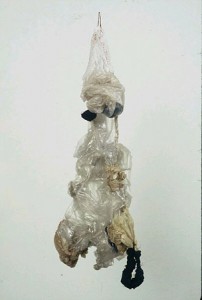
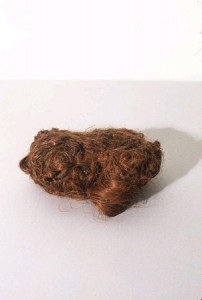
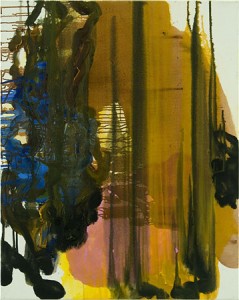

Pingback: I get a lot out of these artist interviews | Art Photos Diana